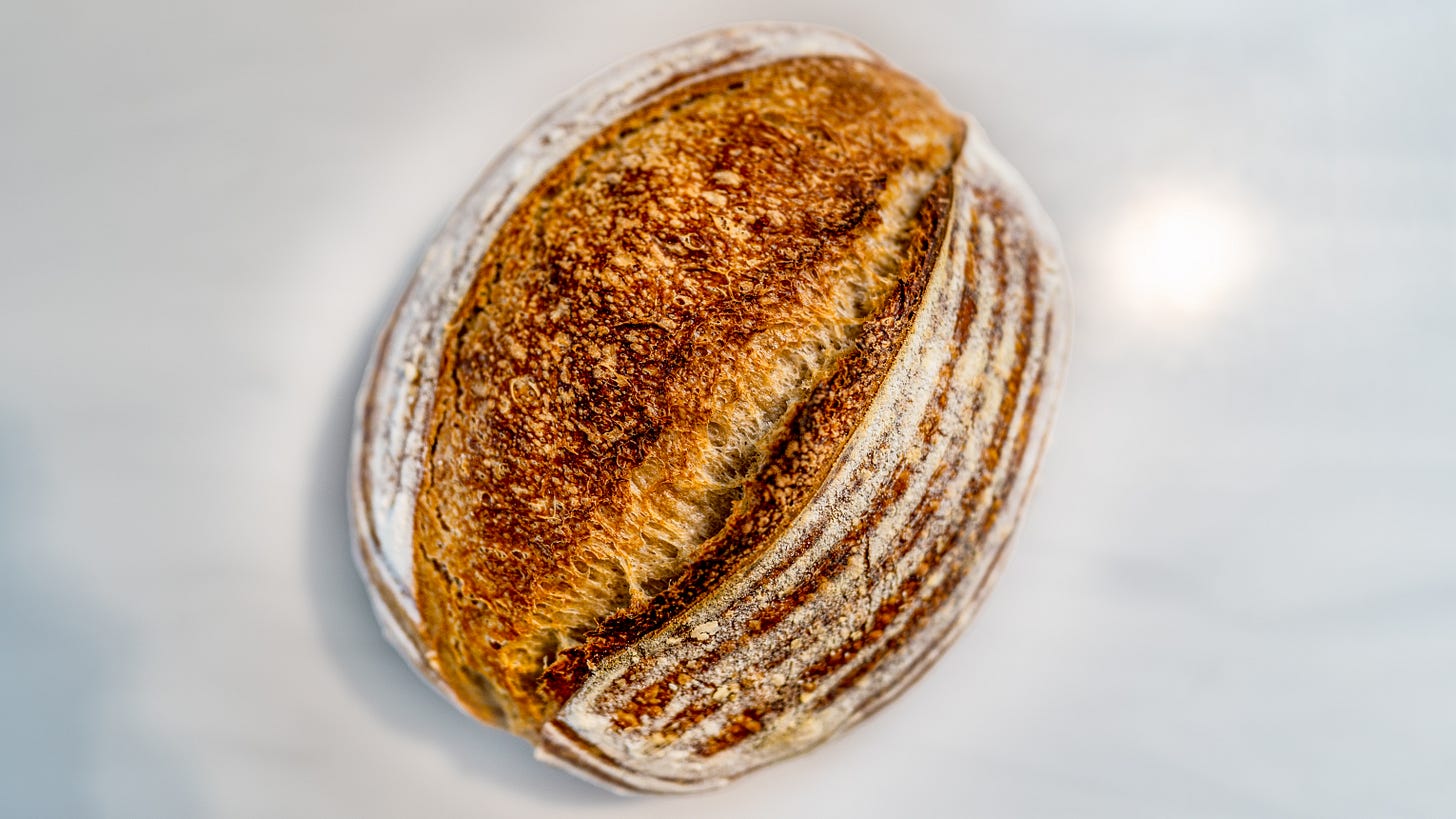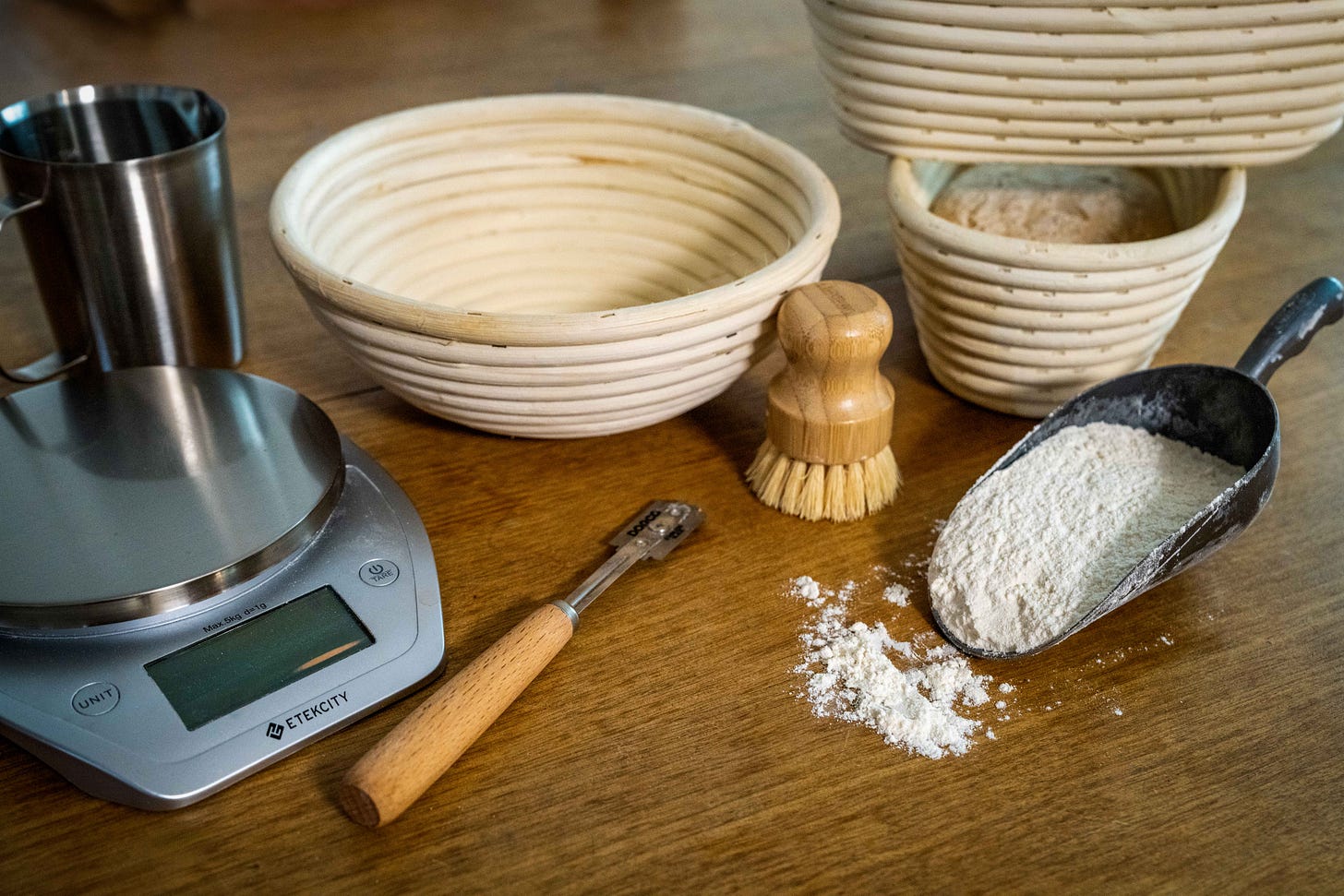NAPA VALLEY, Calif. — In the Napa Valley, famous for its distinctive wines, there's also a deep-seated fascination with another fermentation process — sourdough bread. My personal life-long exploration into the realm of fermented foods, enriched by the wide range of Japanese techniques and Italy's time-honored bread-making traditions, has continuously deepened my appreciation for this age-old culinary art.
Flour, water and salt,
Yeast stirs, dough rises in warmth,
Sourdough's life unfolds.
Every culture has its unique connection with fermented foods, and this haiku reflects my special admiration for Japanese culture with its extensive history in fermentation, from the elaborate methods of brewing sake to fermenting soybeans for miso and the potent natto. Yet the universality of fermented foods transcends borders, acting as a cultural bridge, uniting people through shared culinary experiences and traditions.
A culinary bridge
Sourdough bread, with its simple ingredients and complex flavors and textures, represents a culinary bridge connecting different cultures and eras. Its origins date back to ancient civilizations, making it the world's first leavened bread. The magic of sourdough lies in its basic ingredients — flour, salt and water — left to capture wild yeasts and bacteria from the air, sparking a natural fermentation process. This fermentation not only leavens the bread but also imparts a unique tangy flavor, a delightful crunch to the crust and a soft, chewy crumb.
My understanding of sourdough deepened during the mid-1980s when I was in Italy, a place where breadmaking is more an art form driven by tradition and intuition than a precise science. This approach, a celebration of natural yeasts and a thoughtful, unhurried method of breadmaking, is eloquently captured in Carol Field’s “The Italian Baker.” The book not only reinforced my techniques but also enriched my appreciation of the practices that define authentic sourdough breadmaking.
In the early 1990s I discovered "Brother Juniper’s Bread Book: Slow Rise as Method and Metaphor" by Peter Reinhart, a local baker. This book deepened my understanding and appreciation of natural food processes. Reinhart, drawing inspiration from Joseph Conrad, notes the centuries-old fermentation methods akin to those in winemaking. This ancient wisdom, now applied to breadmaking, enables bakers to create leavened bread using nothing more than flour, water and salt. These simple ingredients, under the watchful eye of a skilled baker, transform through natural fermentation into a loaf of sourdough, embodying both tradition and the continuous evolution of culinary arts.
More recently, my fascination with fermentation science has been rekindled by rereading "The Book of Miso" by William Shurtleff and Akiko Aoyagi. While this book primarily focuses on miso, a cornerstone of Japanese fermentation, the principles it explores are universally applicable to the broader realm of fermentation, including sourdough breadmaking. The meticulous attention to detail, the emphasis on the balance of microorganisms and the patience required in the fermentation process detailed in the book resonate with my own experiences.
Sourdough's health benefits add to its appeal. The fermentation process breaks down gluten, making the bread more digestible and suitable for those with mild gluten sensitivities. It has a lower glycemic index than conventional bread, making it a healthier option for blood-sugar management. Additionally, the process increases the availability of essential minerals such as iron, zinc and magnesium, thanks to bacterial activity that reduce the presence of phytates, which can inhibit mineral absorption.
Terroir extends beyond the vineyard and winery
In the Napa Valley, the fermentation process is synonymous with winemaking. However, the principles of fermentation extend beyond the winery to the kitchen. The same microflora contributing to the valley's distinct wines also impart unique qualities to the sourdough bread made here. The terroir, a combination of specific environmental conditions and microflora, infuses a distinctive character into my sourdough, a contrast to my earlier experiences in Boston, where the starter took weeks to develop. In Napa, surrounded by wineries and vineyards, starters spring to life in mere days.
The process of making sourdough is as rewarding as it is beneficial. Creating the starter requires patience and attentiveness akin to nurturing any living organism. The starter is a mix of flour and water that captures wild yeasts and bacteria, which are then fed and developed over several days.
Click here to watch a video of the entire process.
SOURDOUGH STARTER
Start to finish: 5 minutes daily; total time varies
Servings: not applicable
Ingredients:
60 grams organic white bread flour (about 1/2 cup)
10 grams whole-wheat or rye flour (about 1 ¼ tablespoons)
70 grams filtered water (about 1/3 cup)
Using a gram scale for accuracy, mix the ingredients in a bowl and transfer to a clean Weck jar. Cover and leave on the counter, avoiding direct sunlight. Daily, mix the same ingredients in a new jar, adding a few grams of the previous day's starter. Discard any excess starter or use it to add a tangy flavor to pancakes, cupcakes or muffins.
A ready starter will bubble, froth and emit a sharp, yeasty aroma. If it smells unpleasant and appears gray and watery, discard and start again. The result is a lively starter that forms the basis of the sourdough bread. It's a living entity, changing and evolving much like wine.
SOURDOUGH BREAD
Start to finish: 24 hours (active steps fewer than 10 minutes)
Servings: 4-6
Ingredients:
80 grams organic wheat flour (about 2/3 cups)
700 grams organic white bread flour (about 5 ½ cups)
16 grams salt (about 3 teaspoons)
520 grams filtered water (about 2 1/4 cups)
90 grams starter (about 1/3 cup)
4 tablespoons rice flour (for dusting)
Mix all ingredients into a sticky ball in a large bowl. Cover with a moist towel, rest for 30 minutes, then fold the dough until it has a smooth surface. After another 30-minute rest, repeat the folding. Let the dough rise on the counter until it increases by an inch (1 to 3 hours).
Form the dough into an elongated oval and place it in a dusted proofing basket. Dust with rice flour, cover and rest on the countertop for at least 4 hours, then refrigerate overnight (up to 24 hours). Preheat the oven with a Dutch oven inside to 500 F. Score the dough and carefully place it in the Dutch oven. Cook covered for 20 minutes, then uncovered for 5 to 7 minutes until golden brown. Cool on a wire rack before slicing.
The process of making sourdough is a reflection of nature's rhythm — a slow, patient and rewarding journey. Each loaf is unique, telling its own story of the environment, the ingredients and the hands that crafted it. This journey from the simplest of ingredients to a loaf of sourdough bread is a testament to the timeless art of fermentation, a craft that transcends cultures and generations.
Tim Carl is a Napa Valley-based photojournalist.







Thank you for this! I started making sourdough eight years ago and that starter is still chugging away. I will try your recipe.
I've made sourdough bread - and beer, wine, pickles, sauerkraut, cheese. dosas and my favorite, kim chi (How can they charge that much for a little jar of soiled cabbage?) Never trusted myself to make ham or sausage fermented.
If you find yourself with too much sourdough brea, you know where I live...